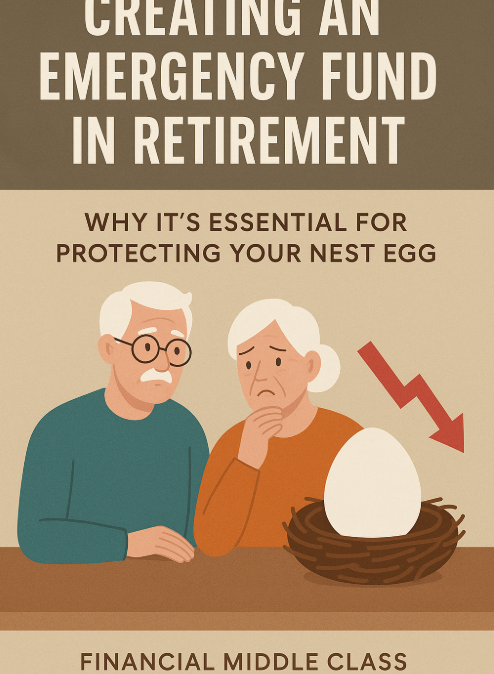When most people think about emergency funds, they picture young families or working professionals setting aside cash for unexpected car repairs or job loss. But here’s the truth few talk about: retirees need emergency funds just as much — if not more.
Why? Because once you’re retired, you’re living off fixed income streams and investment accounts. Without a cash cushion, a sudden expense can push you to sell investments during a market downturn — locking in losses that could have been avoided. An emergency fund in retirement isn’t just a safety net. It’s a shield that protects your hard-earned nest egg.
The Danger of Relying Only on Investments
Imagine this scenario: you’re retired, and the stock market takes a dive. At the same time, your roof springs a leak or a medical bill arrives. If you don’t have an emergency fund, you may be forced to sell stocks when prices are down, turning a temporary paper loss into a permanent financial hit.
This is known as “sequence of returns risk” — pulling money from investments at the wrong time early in retirement can have devastating long-term effects on your portfolio.
Lesson: Having liquid cash ready means you don’t have to raid your investments when the market is volatile.
Why Retirees Need an Emergency Fund
- Market protection. Cash prevents you from selling investments in down markets.
- Healthcare costs. Even with Medicare, out-of-pocket expenses, prescriptions, and long-term care add up.
- Home repairs. Roofs, appliances, and plumbing don’t care that you’re retired.
- Family support. Retirees often help adult children or grandchildren financially — sometimes unexpectedly.
- Peace of mind. Knowing you have a buffer keeps you from constantly worrying about market headlines.
How Much Should Retirees Save?
The general rule of thumb for retirees: 12 to 24 months of essential expenses.
- If your monthly essentials (housing, food, insurance, medical costs) total $4,000, aim for $48,000 at minimum.
- For added peace, especially if your portfolio is heavily invested in stocks, consider 18–24 months.
Unlike workers who can replenish an emergency fund with future paychecks, retirees need a larger cushion since their income streams are fixed.
Step 1: Keep It Separate
Open a dedicated savings account just for emergencies. Keeping it apart from checking or spending accounts makes it less tempting to dip into. A high-yield savings account or money market account works well.
Step 2: Replenish After Use
If you need to tap your emergency fund, make a plan to rebuild it. Maybe you redirect some investment withdrawals over the next 12 months or cut back temporarily on discretionary spending. The goal is to always keep your safety net intact.
Step 3: Don’t Confuse It With “Cash Flow”
Retirees often think, “My pension or Social Security is enough.” But those payments cover regular living costs, not sudden emergencies. An emergency fund should sit on top of those income streams, ready for the unexpected.
Step 4: Balance Liquidity and Growth
Your emergency fund should be safe and accessible — not tied up in risky investments. That doesn’t mean all your money should sit in cash. It means carving out a portion of your portfolio specifically for liquidity while the rest continues to grow.
The Bottom Line
An emergency fund isn’t just for working families. Retirees without one risk sabotaging their own retirement plans by being forced to sell investments in down markets. Having a year or more of cash on hand buys you flexibility — flexibility to ride out storms, keep your portfolio intact, and enjoy retirement without unnecessary financial stress.
Related Reads:
How to Minimize Debt Later in Life
Estate Planning for Millennials: Why It’s Not Just for the Elderly
Life Insurance and Debt: How to Protect Your Family
Zero-Based Budgeting for Families: Planning Beyond Today
Call-to-Action
If you’re already retired — or nearing retirement — take a hard look at your cash reserves. Start setting aside enough to cover at least 12 months of expenses. Your future self will thank you when the market dips and your nest egg stays safe.
